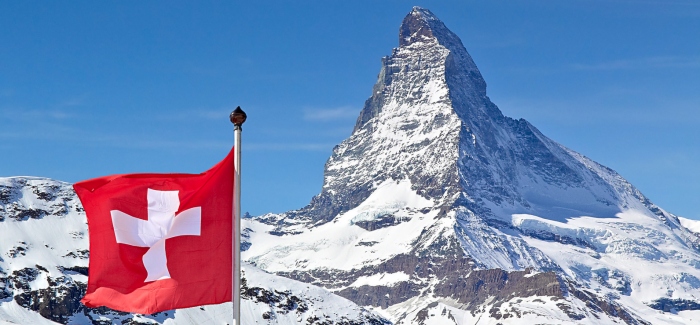Click here to view the latest version of this article, based on the QS EECA University Rankings 2019.
The third edition of the QS University Rankings: Emerging Europe and Central Asia results are in, showcasing 200 (extended from 150 in the previous ranking) of the region’s top universities. The ranking draws on a methodology which assesses universities on nine performance indicators, including research publications and employer reputation.
Read on for a more detailed look at this year’s top 10 in the EECA ranking, or view the full rankings results table here.
1. Lomonosov Moscow State University
Location: Russia
Ranked 1st in Emerging Europe and Central Asia for the third time in a row, Lomonosov Moscow State University is a public research university which is consistently considered one of the top universities in Russia. Established in 1755, Lomonosov Moscow State University is currently ranked 108th in the overall QS World University Rankings® 2015/16. It teaches around 47,000 students, of which about 4,000 are from outside of Russia. Lomonosov’s library system is one of the largest in Russia, and the university claims to house the tallest educational building in the world. Lomonosov appears in the QS World University Rankings by Subject 2016 a total of 24 out of a possible 42 times, achieving high positions (in the top 50) for subjects such as linguistics, mathematics and physics, and several more top-100 positions.
2. Novosibirsk State University
Location: Russia
Novosibirsk State University is a public research institution which retains second position in the EECA ranking this year, and is ranked 317th in the latest world rankings. Established in 1959, it’s located close to Novosibirsk (the largest city in the Asian part of Russia), in the well-known educational and scientific research center of Akademgorodok (Academic Town). In addition, 80% of teachers at Novosibirsk State University are scientists from the Siberian Branch of the Russian Academy of Sciences. Around 6,000 students are enrolled in 13 faculties, including 826 international students. Overall, Novosibirsk State University is considered one of the top universities in Russia for science-related subjects, and is featured in the top 100 of the QS World University Rankings by Subject for physics and astronomy, as well as the top 150 for mathematics. It’s also ranked as one of the best universities in the world for modern languages, chemistry and computer science.
3. Saint-Petersburg State University
Location: Russia
The final of this trio of top universities in Russia, Saint-Petersburg State University has climbed from 5th place in the previous edition of the EECA rankings. The oldest university in Russia, it was founded in 1724 by Peter the Great. Ranked joint 256th in the latest world university rankings, it’s also one of the largest Russian universities, with around 30,000 students enrolled, including over 3,000 international students. Saint-Petersburg State University boasts a number of Nobel Prize winners and political elite amongst its alumni, including current President Vladimir Putin. The university is a member of the Coimbra Group, an association of ‘long-established European comprehensive, multidisciplinary universities of high international standard’. Saint-Petersburg State University is ranked among the world’s best for 11 subjects, with a top-50 placing for mineral and mining engineering, a top-100 position for linguistics, and positions in the worldwide top 150 for mathematics, philosophy, modern languages and history.
4. Charles University
Location: Czech Republic
Heading to the Czech Republic for the next of the top 10 universities in Emerging Europe and Central Asia, Charles University is ranked 4th in the EECA region (down one place from last year) and 279th in the overall world rankings. Located in the Czech capital of Prague, it’s the oldest and largest of the universities in the Czech Republic, dating back to 1348 and currently teaching about 51,400 students. Charles University is popular with international students taking part in student exchanges such as Erasmus +, and the university’s international cooperation program includes partnerships with almost 200 universities around the world. Charles University is ranked as one of the top universities in the world for 15 subjects, including places within the top 100 for geography and the top 200 for philosophy, modern languages, English language and literature, history, linguistics, medicine, pharmacy and pharmacology and mathematics.
5. University of Tartu
Location: Estonia
The University of Tartu is the national university of Estonia and the country’s highest-ranked institution in both the EECA and world rankings, placing 400th in the latter. It’s also the highest-ranked university in the Baltic region and the oldest university in Estonia, having been established back in 1632. The University of Tartu currently has around 13,400 students enrolled, including over 800 from outside of Estonia. It’s a member of both the Coimbra Group and the Utrecht Network, which aim to promote international collaboration in higher education. Although it teaches mainly in Estonian, there are 17 English-taught programs available. The University of Tartu features in the QS World University Rankings by Subject six times, placing among the world’s best for communication and media studies and linguistics (both in the top 150), English language and literature, modern languages, medicine and computer science and information systems.
6. University of Warsaw
Location: Poland
The University of Warsaw is ranked 6th in the EECA region and 344th in the most recent world rankings, making it Poland’s highest-ranked institution. The university was established in 1816, so celebrates its 200th anniversary this year, and its long history is full of fascinating events – for example, during World War II, the German occupation of Poland saw the campus turned into military barracks and education in Polish banned, though academics continued to teach through an organized “Secret University of Warsaw”. Today the University of Warsaw is the largest university in Poland, with around 51,700 students enrolled in 20 faculties. The University of Warsaw is ranked among the world’s top universities for 10 different subjects, including modern languages and politics (in the top 150) as well as linguistics, philosophy, mathematics, physics and astronomy and sociology (ranked 151-200).
7= Jagiellonian University
Location: Poland
Jagiellonian University is Poland’s oldest university (founded in 1364) and is this year ranked joint 7th in the EECA region and 411-420 in the world. It was known as the University of Kraków from its founding, until it was renamed Jagiellonian University in 1817 to commemorate the royal dynasty of the same name. Today the university teaches over 41,800 students in 87 fields of study and 15 faculties. Jagiellonian University has educated a number of famous historical figures and scholars, including John III Sobieski (King of Poland until 1696), Nicolaus Copernicus, Pope John Paul II and two Nobel Prize winners, Ivo Andrić and Wisława Szymborska. The university ranks as one of the best in the world in 11 subjects, including modern languages (in the top 100), as well as English language and literature, geography, linguistics and philosophy (in the global top 200).
7= Czech Technical University in Prague
Location: Czech Republic
Sharing seventh place with Jagiellonian University this year, Czech Technical University in Prague is ranked 451-460 in the world university rankings, and is one of the oldest and largest technical institutions in Europe, founded in 1707. Around 24,000 students are enrolled in eight faculties, with more than 100 degree programs on offer, mostly in engineering and related subjects. Like Jagiellonian University, Czech Technical University boasts many reputed alumni, including Christian Doppler, namesake of the Doppler Effect. Czech Technical University in Prague has been ranked as one of the top 250 universities in the world for six subjects: civil and structural engineering (in the top 100), physics and astronomy, computer science and information systems, mechanical engineering, electrical engineering and mathematics.
9. Bogaziçi Üniversitesi
Location: Turkey
Bogaziçi Üniversitesi makes an impressive leap of eight places in this year’s EECA ranking to place 9th, and is the third-highest-ranked Turkish university in the latest QS World University Rankings, at 441-450. Also known by its English name, Bosphorus University, Bogaziçi Üniversitesi is a major research university located in Turkey’s largest city, Istanbul. It was founded in 1863 as Robert College and was the first American university to be founded outside of the US. The university maintains strong ties to the American higher education system, and English is the language of instruction. Bogaziçi is featured in the top 300 universities in the world for electrical engineering, education and training, mechanical engineering and computer science.
10. Masaryk University
Location: Czech Republic
Ranked 551-600 in the world university rankings, Masaryk University was founded in 1919 is located in the city of Brno. It is recognized as one of the most important teaching and research institutions in the Czech Republic and is one of the fastest-growing institutions in the country. Named after Tomáš Garrigue Masaryk, the first president of an independent Czechoslovakia, the university is the largest employer in the South Moravian Region of the Czech Republic. 35,848 students are currently enrolled, including 7,110 international students, and in 2006 Masaryk was the first university in the world to have an Antarctic research station (and remains the only university to independently operate one). In the QS World University Rankings by Subject, Masaryk University is ranked 401-500 in the world for computer science and information systems.













